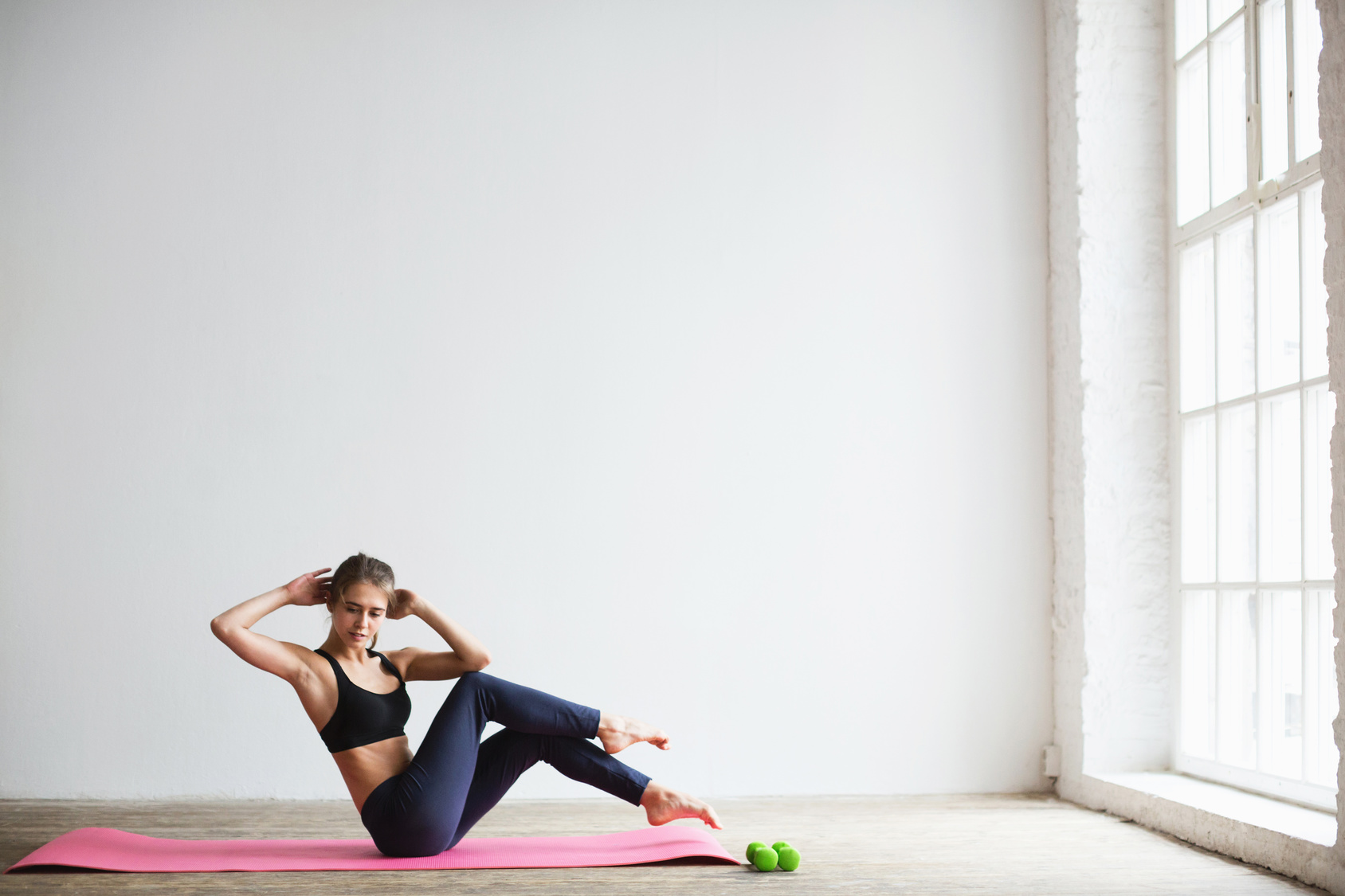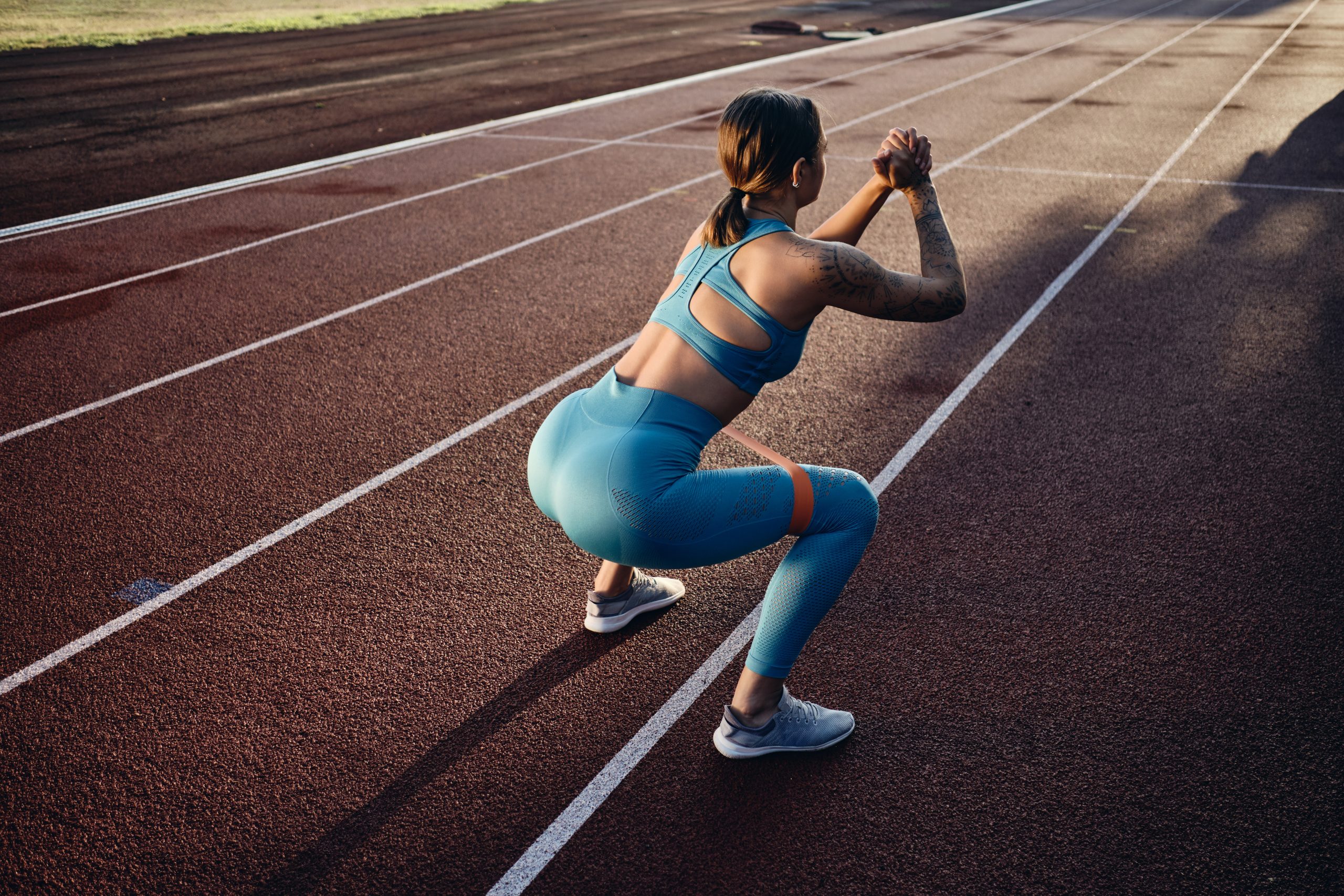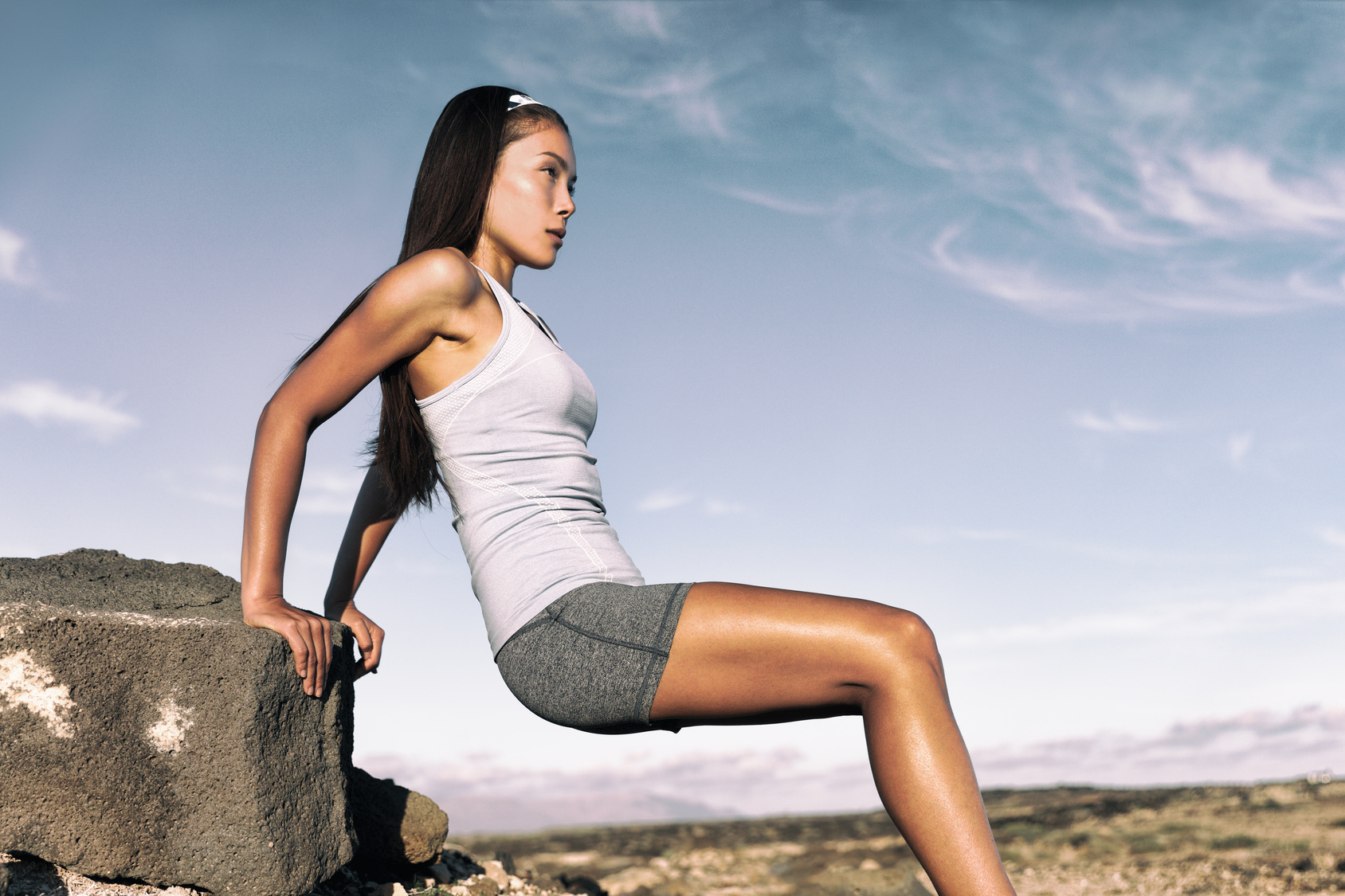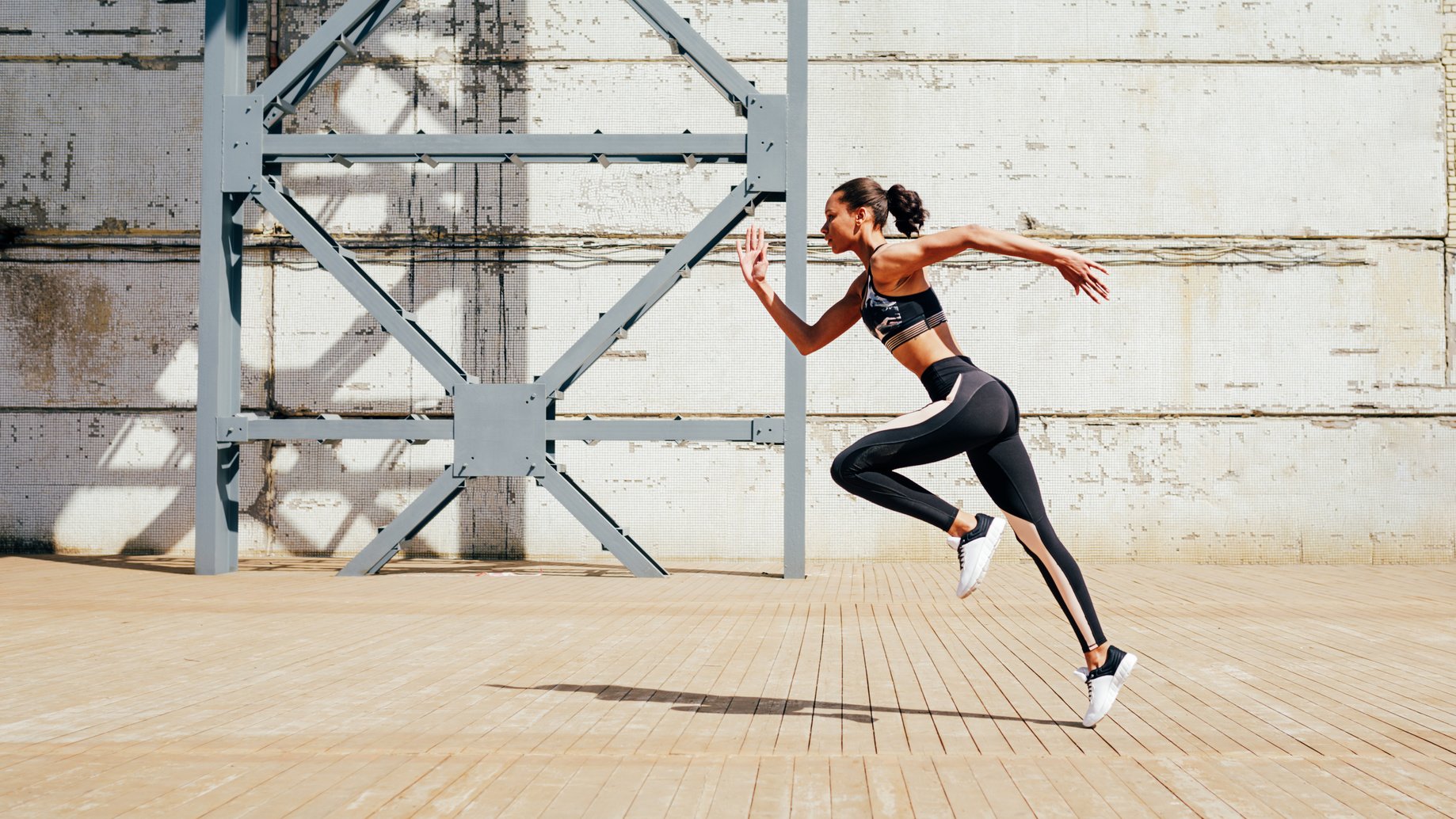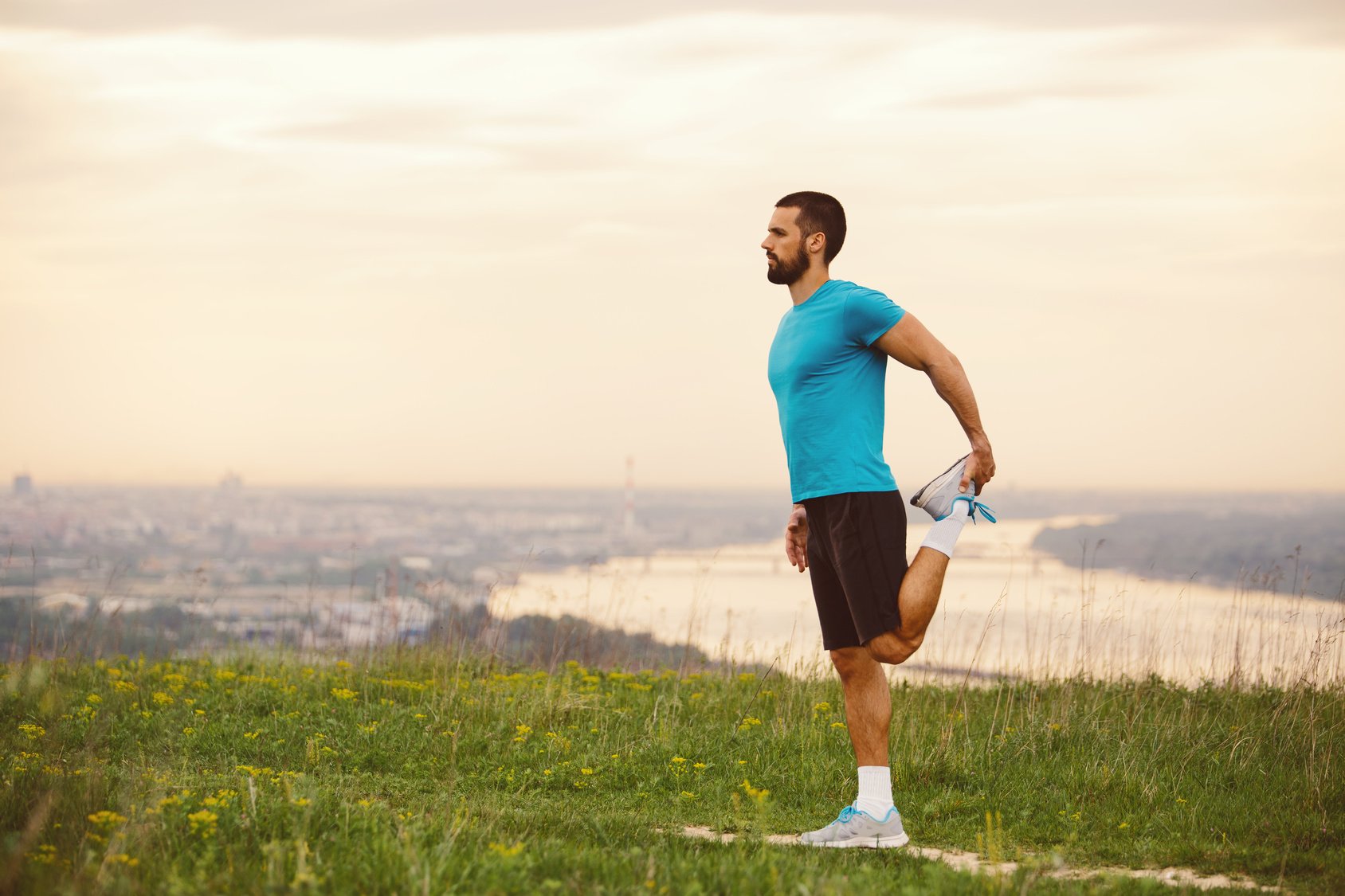Looking for the best core exercises for runners? Then today I’ve more than 25 core exercises to share with you.
But before I do that, let me clear up something
It’s no secret that the best way to improve your running is to run more. The rule of training specificity still applies—you practice what you’re looking to improve.
There’s no way around that.
But that doesn’t mean other workout plans don’t have a place in your training program. Cross-training the right way helps improve your overall athleticism and prevents injury. Unfortunately, most runners are well aware of this fact but often choose to ignore it, which is a big mistake.
And as far as I can tell, one of the best forms of cross-training for runners is strength training, especially core training. Your core muscles are, after all, some of the most important muscles in your body. Yet, they are often ignored when it comes to running training programs.
That’s why in today’s article, I decided to share with you a list of the most efficient core exercises for runners that can help improve your running game. But before I get into that, let’s discuss basic core muscle anatomy as well as the benefits of core strength for runners.
Sounds great?
Let’s get started.
What Exactly Is The Core?
Let’s break down what the core is all about.
Contrary to popular belief, your core isn’t just your abs. It’s a complex set of muscles extending well beyond the six-pack.
The core includes the whole series of muscles connecting the pelvis, spine, and trunk to each other and the rest of the body. Stretching from the diaphragm and pelvis to the hips and back, these interconnected core muscles provide stability, strength, and power to your upper and lower body.
More specifically, the core involves five main areas.
- Transverse abdominis—interval core muscles that wrap around your spine and sides
- Erector spine—your lower back muscles
- Obliques—both the external and internal muscles on the sides of your abdomen
- Rectus abdominis—what most people assume when they hear the word “abs.”
- Other muscles include the glutes, scapula, flexors, and pelvic floor.
The Benefits of Core Exercises for Runners
Why is core training so important for runners?
Many reasons, actually. Let’s briefly discuss a few.
Deep Abs Help You Run Faster. If you have powerful rectus and transverse muscles—mainly the lower and deep abs — you’ll be able to generate more speed and power as you push off the ground.
Maintain Stability. When you neglect proper core work, you increase your risk of inefficient movement. This can create an imbalance like under striding or overstriding in your gait. Such dysfunction can only lead to trouble down the road.
Cor Muscles Protect Your Lower Back. Research shows that a strong core can reduce lower back pain and lower the risk of injury to this vulnerable area.
Hello Six-Pack Abs. Since your core includes all of the abdominal muscles working within your midsection, strengthening them is vital if you want to get the body you’ve always dreamed of.
Reduce injury risk. Research has reported that a strong body is more resilient to injury. And as far as I can tell, the muscles of the core are some of the most important muscles in your body that not only ensure performance but also keep your body structure together.
Keeps going strong. A strong midsection will help you power through the late stages of a tough run or race, keeping form and drive throughout the run/race.
Note: The information listed is by no means an exhaustive list of the benefits that core training offers, but it should give you a clear idea of what you stand to gain by adding a few simple core exercises each week.
The 25 Best Core Exercises For Runners
As a rule, core work should strengthen all the muscles that stabilize and support the pelvis and spine.
To make the most out of your core training, aim for compound exercises that force your core to work hand in hand with other large muscle groups.
The more muscle activation, the merrier.
The following beginner-friendly routine shares exercises consisting of both abs-focused moves—like the classic plank—and compound exercises that hit your entire core.
Perform each move for 30 to 45 seconds, then take a 30-second break before moving on.
As you get stronger and fitter, make the moves more challenging by holding them for longer or doing more reps while taking shorter rest breaks.
Oh…I forgot! One of the best things about this routine is that you can do it anywhere, whether at the office, home, or gym.
Planks
I love planks.
This tough isometric exercise hits every angle of the core.
It also works on spinal stability, vital for efficient and pain-free running.
Proper Form
Lie on your stomach and prop yourself onto your toes and elbows with your feet slightly apart.
Your toes should be about hip distance apart, with your elbows resting on the ground in a straight line under your shoulders.
Now lift and straighten your body to form a straight line from your head to your heel. Keep your core muscles engaged throughout the exercise.
Gaze at the floor while keeping your head relaxed and stress-free.
Hold the plank position for 45 seconds.
For more of a challenge:
Hold the position for a full minute or more as you get stronger.
Additional Reading – Does running give you abs?
Side Planks
This plank variation strengthens the obliques while building endurance throughout the core.
Just make sure you engage your obliques the entire time.
No cheating allowed!
Proper Form
Lie on your side, supporting your upper body on your lower forearm while holding your top arm at your side or up in the air.
Your feet should stack on top of each other.
While lifting your body, keep a straight diagonal line from your head to your feet.
Hold the position for 30 seconds to one full minute, then switch sides.
Balance Plank
An advanced plank variation that builds strength and endurance throughout the body.
Proper Form
Assume a plank position.
While keeping a straight line from your head to toe, hold the position, making sure your lower back, glutes, and abs are all engaged.
While holding the position, extend your left arm in front of you, return to position and then extend your right arm.
Then return to position and lift your right Leg off of the ground behind you, return to position and repeat with the left Leg.
Hold each new position for 3 to 5 seconds, and repeat the cycle for 45 seconds.
For even more of a challenge: Hold each position longer, or do crunches in a plank position by bringing your left elbow down to meet your right knee while lifting the knee, then switch sides.
Russian Twists
Russian twists are some of the best exercises for firing up side muscles.
Proper Form
Have a 5- to 15-pound medicine ball or weight next to you.
Sit on the floor with your knees bent and your heels about a foot from your butt
Keeping your back straight, lean back slightly without rounding your spine to a 45-degree angle, and raise your feet off the floor.
Pick up the weight and hold it at chest level, then twist to the right, reaching with the ball as far behind you as possible.
Pause, then rotate to the other side.
Keep alternating sides.
For more of a challenge: Use a heavier medicine ball or dumbbell, or do more reps.
Superman
The Superman exercise targets your lower back muscles, vital for maintaining stability in the hip region.
Proper Form
Lie on your stomach with your arms and legs extended and raise your head off the floor slightly to look like Superman in flight.
While holding this pose, raise your left arm with your right leg roughly 3 to 5 inches off the floor, holding for a 5-second count.
Slowly lower your arm and Leg, and switch sides. Repeat for 45 seconds.
For more of a challenge: Hold the Superman pose longer and do more reps.
Single-Leg Glute Bridge
This excellent core exercise mainly targets the glutes, but other core muscles work hard as well.
Proper Form
Lie on your back with your legs bent at almost 90-degree angle and your feet flat on the floor.
While engaging your core, lift your hips off the ground, so there’s a straight line from your knees to your shoulder.
Extend your right Leg with your toes pointing toward the ceiling.
Hold for a moment, then lower your Leg to the floor and repeat on the other side.
Continue for 45 seconds.
Make sure to use good form throughout the exercise.
No sagging or dipping of the butt is allowed.
For more of a challenge: Flex your legs and reach them as high as you can while solely relying on your glutes to support you the entire time.
Windshield Wipers
Also known as metronomes, this is a powerful core exercise for your obliques.
It’s also key for building rotational core strength, another vital component of good performance.
Proper Form
Begin by lying on your back with your knees bent and raised over your hips and your ankles parallel to the floor.
While engaging your core muscles and keeping your hips in contact with the floor, rotate your legs to the right, hold for a moment, then bring them back up and repeat the movement on the other side.
Aim for at least eight reps on each side.
Avoid swinging too fast and using the momentum of the movement.
For more of a challenge: Flex your toes and keep your Leg straight while doing the exercise, or hold the pose longer on each side.
Scorpion Planks:
This tough move will not only give your core a tough workout but also build strength and mobility in your upper body.
Scorpion planks also help you stretch out your hip flexors and obliques, which are often neglected.
Proper Form
Assume a push-up position with your hands on the floor and the balls of your feet resting on a low chair or a bench.
Keep your back and legs aligned in a straight form.
Lift your left Leg off the bench and cross your knee under your body toward your right shoulder as far as you can, then return it to the bench and do the same with your right knee and left shoulder.
Repeat for 45 seconds
For more of a challenge, add a push-up to the top of every scorpion move you make.
The Boat
A fantastic exercise to strengthen your erector spinae, rectus abdominis, and the hip flexors.
Proper form
Begin by sitting up straight on the floor with your knees bet, feet flat on the floor, and back straight.
Next, hold your arms out in front of you as you slowly lift your feet off the floor while keeping them together until they form a 45-degree angle to your torso.
Active your entire core, balance on your tailbone, and keep your back flat the whole time.
Extend your legs so they’re straight and your body forms a V shape.
Hold the pose for a count of 10, slowly lower your legs, then repeat.
Reach your arms straight in front of you while keeping them parallel to the ground.
For more support, feel free to place your hands on the ground or underneath your hips.
Dead Bug
The dead bug (which looks exactly like it sounds) is an awesome exercise for connecting your mind to your core.
It’s an all-encompassing core move that works your deep inner core, mainly the diaphragm, transverse abdominis, multifidus, and pelvic floor; what’s not to like.
Proper form
Begin by laying on your back with your arms extended toward the ceiling, directly over your shoulders, and legs in a tabletop position (both knees bent 90 degrees and stacked over your hips).
Lower your left arm and right Leg at the same time until they’re hovering just above the ground, then slowly return to starting position.
Keep both knees hovering a few inches from the floor.
Engage your core and squeeze your body throughout the exercise, lower back pressed into the floor.
Slowly extend your left leg straight while dropping your right arm overhead at the same time.
Kneeling Extension
Another great move that keeps your core muscles strong, as well as helps prevent lower back pain.
Proper Form
Begin by kneeling on all fours, with your hands beneath your shoulders and knees directly under your hips.
Activate your core muscles and slowly raise your left arm and extend it straight forward.
Slowly lift your right Leg and extend it straight back, and point your toes down.
Hold the pose for a count of ten and slowly lower to starting position, and switch sides.
Repeat five times on each side.
Bicycle Crunches
Regular crunches are too boring.
Spice them up with bicycle crunches.
It’s beginner-friendly, and can be done anywhere, but it’s also challenging.
This is one of the best core exercises you can do—and one of my favorites—targeting not only the usual abs but also the obliques and deep abs.
Proper Form
Lie flat on the ground, with your lower back pressed flat into the ground, knees bent, and head and shoulders raised slightly above it.
Next, place your hands lightly behind your head, then bring your knees toward your chest and raise your shoulder blade off the floor, but be sure not to pull on the back of your neck.
Bring one knee up towards your armpit while straightening the other Leg, keeping both elevated higher than your hips.
Rotate your torso as much as possible so you can touch your elbow to the opposite knee as it comes up.
As you perform the movement, twist through your core as the opposite arm comes towards the elevated knee.
Focus on moving through your core as you turn your torso.
Don’t feel like you have to touch the elbow to knee, but it’s a worthy goal to have.
Additional resource – Guide to running lingo
Scissors kick
Begin by laying on your back, knees bent, feet on the floor, and hands underneath the lower back for support.
Next, lift your left leg one inch off the ground while extending the right Leg to the ceiling, then kick the legs, toes pointed. Keep alternating back and forth so that it looks like a scissor motion.
Engage your abs throughout the exercise.
Aim for eight reps on each side to complete one set.
Glute kickback
Start by kneeling on the floor, on all fours, hips lined over the knee, hands directly under the shoulders, and back parallel to the floor.
Next, lift your right leg until your hamstrings are in line with your back, pause, and then slowly lower your Leg back to starting position, then switch sides to complete one rep.
Continue alternating between legs.
The Bridge
Lay flat on the ground with hands on the side and knees bent. Next, raise your hips off the ground by pushing with the heels.
Next, squeeze your glutes for a moment as hard as possible to keep the hips up.
Then take three to five seconds to slowly lower back to the ground to complete one rep.
Mountain climbers
Assume a push-up position, so your hands are directly under your chest at shoulder-width apart with straight arms.
Next, while holding the upper body steady, raise your right foot off the ground, bring the knee as close to the chest as possible, then repeat with the left Leg.
Continue alternating right knee, then left knee to the chest, as fast as possible while keeping good form.
Aim for 16 to 20 reps to complete one set.
Swiss-ball Roll-out
Begin by kneeling on a mat or the floor, elbows bent under the shoulders and resting tightly on a stability ball and core engaged.
To perform the Swiss ball roll-outs, roll the ball forward on the elbows as far as possible, then slowly roll back to starting position while keeping the back straight the entire time.
That’s one repetition.
Do three sets of 15 reps each.
Cross-climber with Feet on a Swiss Ball
Assume a standard push-up position, arms straight, shins resting firmly on a Swiss ball.
Be sure that your body is forming a straight line from the head to the ankles.
Next, while bracing the core and keeping the back straight, raise the right Leg off the ball and bring the right toward the left elbow, hold it for a moment, then move the right Leg to start position, and repeat on the other side, left knee to right elbow this time.
That’s one rep.
Do 12 reps to complete one set.
Aim for three sets.
Medicine Ball V-up
Hold a med ball, and lie on your back with legs straight and arms directly above the head.
That’s the starting position.
Next, while keeping the elbows straight the entire time, lift your torso and legs as you bring the ball toward your feet, pause for a count of three, then slowly lower back to starting position.
That’s one rep.
Do three sets of 12 to 15 reps each.
Spider-man Plank Crunch
Begin in a classic plank position with your forearms on the mat and body straight from head to ankles.
Next, raise your right Leg, and bring your right knee in towards the right elbow, hold it for a moment, then move your Leg back to plank position and switch sides.
Make sure to engage your core and keep your body steady and straight throughout the movement.
Keep alternating sides for a total of 16 reps to complete one set.
Aim for three sets.
Double Mountain Climber
Get into a push-up position with hands a bit wider than the shoulders.
Next, jump both of your feet up towards the hands, with the knees coming just outside of the elbows, pause for a second, then push back to starting position in one continuous and explosive motion.
Do at least 25 reps on each side to complete one set.
Aim for three sets.
Jump Squats
Assume an athletic position and stand as tall as you can with the feet spread shoulder-width apart.
Next, while keeping your back straight and head up, squat down until the knees are bent at roughly 90 degrees; then, as soon as you reach the bottom part of the squat, jump up explosive in the air by mainly pressing with the balls of your feet, using the thighs like springs.
Move into the next rep as soon as you land on the floor.
Do 12 to 16 reps to complete one set.
Aim for three sets.
Plank with Alternating arm and Leg Raise
Assume a standard push-up position with both arms straight, fingers pointed forward, and core activated.
Next, raise your right arm and left Leg, then extend and straighten them both until they are parallel to the floor, hold it for a count of three, then repeat to starting positing and switches sides.
Do eight reps on each side to complete one set.
Shoot for three sets.
Bonus Tip – How To Become A Better Runner
If you’re looking to get the most out of your running workouts, then you should check out my Runners Blueprint System.
My system was specially designed for beginners who either want to start running or take their training to the next level but have little clue on how to do it.
And don’t worry, my ebook is written in a conversational, jargon-free, style.
All you need to do is download it, follow the simple instructions, then start seeing results ASAP.
Here’s what it includes :
- How to quickly and easily get started running (it’s indeed is easier than you’d think!)
- How fast (or slow) should you go on your first sessions
- The exact 13 questions you need to answer before you buy a running shoe
- The seven most common running injuries….how to deal with them before they progress into major ones!
- The quick-standing stretching routine that keeps you flexible even if you’re busy as hell
- The 10-minute warm-upyou must do before any session to get the most of your training
- And much, much more.
Click HERE to get The Runners Blueprint System today!
Conclusion
Thank you for reading my post.
Feel free to leave your comments below.

